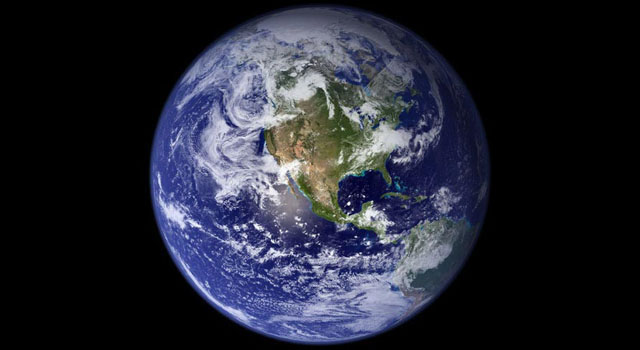NASA joins White House Climate Task Force

NASA has joined the White House National Climate Task Force, another step in the agency's continued study of climate change and global warming.
On Jan. 27, President Joe Biden issued an executive order that outlined the details of the National Climate Task Force. Last Thursday (March 18), NASA announced that it has joined the task force, which "shall facilitate the organization and deployment of a Government-wide approach to combat the climate crisis," according to the executive order.
The new partnership follows a January announcement from NASA that 2020 was tied with 2016 as the hottest year on record.
"The United States and the world face a profound climate crisis. We have a narrow moment to pursue action at home and abroad in order to avoid the most catastrophic impacts of that crisis and to seize the opportunity that tackling climate change presents," the executive order reads.
Related: 2020 ties record for the hottest year ever, NASA analysis shows
"Climate change is one of the most pressing issues facing us today," Gavin Schmidt, acting NASA senior climate advisor and director of NASA’s Goddard Institute for Space Studies in New York, said in a NASA statement. "Given our unique ability to observe the planet from space and the long-term data records we've been able to assemble, NASA is in a prime position to inform policy decisions in the current administration and beyond."
The Biden administration is focused on tackling climate issues and is putting the climate crisis "at the center of United States Foreign Policy and National Security," according to the order. And it's no surprise that NASA is joining the task force. The space agency has been involved in climate issues for decades, starting in 1960 when NASA launched TIROS-1 (the Television and Infrared Observation Satellite), the first weather satellite.
Breaking space news, the latest updates on rocket launches, skywatching events and more!
NASA also continuously updates its climate website with information about rising global temperature, carbon dioxide rates and Arctic ice loss, among other factors impacted by climate change.
Since the TIROS-1 launch, the agency has placed many Earth-monitoring satellites in orbit that have collected data about Earth's changing climate. Right now, there are over two dozen NASA satellites circling Earth monitoring everything from soil moisture to carbon dioxide levels, according to the same NASA statement. You can learn more about NASA's climate and Earth-monitoring missions here.
With its Earth-monitoring missions like Aqua and ECOSTRESS and "efforts to contribute to sustainable aviation and nurturing partnerships with the private sector, NASA already is poised to help the task force address the most pressing climate change issues today," according to the statement.
Email Chelsea Gohd at cgohd@space.com or follow her on Twitter @chelsea_gohd. Follow us on Twitter @Spacedotcom and on Facebook.

Chelsea “Foxanne” Gohd joined Space.com in 2018 and is now a Senior Writer, writing about everything from climate change to planetary science and human spaceflight in both articles and on-camera in videos. With a degree in Public Health and biological sciences, Chelsea has written and worked for institutions including the American Museum of Natural History, Scientific American, Discover Magazine Blog, Astronomy Magazine and Live Science. When not writing, editing or filming something space-y, Chelsea "Foxanne" Gohd is writing music and performing as Foxanne, even launching a song to space in 2021 with Inspiration4. You can follow her on Twitter @chelsea_gohd and @foxannemusic.
